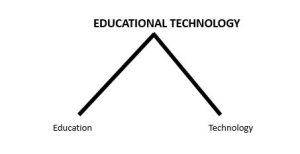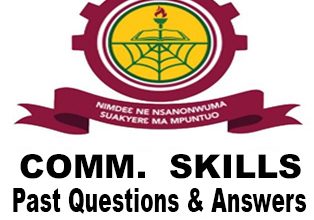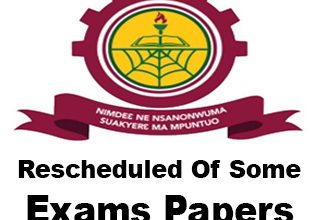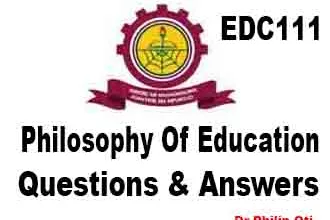Summary Of Educational Technology EDC122
All About Educational Technology For Aamusted Edutech Past Questions and Answers
CHAPTER ONE
DEFINITION AND THE HISTORY OF THE CONCEPT EDUCATIONAL TECHNOLOGY
This chapter consists of
(i) Objectives of the Chapter
(i) important concepts
(iv) definitions of instructional technology and Educational Technology and the (iv) History of Educational Technology.
OBJECTIVES
After reading this chapter the learners should be able to:
- Define Education, Technology, Instructional Technology, and Educational Technology, in their own words.
- Tell a brief history of Educational Technology in relation to the product, process and the analysis/design.
Focus Concepts
Education, Technology, Soft Technology, Hard Technology, Instructional technology, Educational Technology, AECT, Products, Process, Design, Analysis, Systems Approach.
Definitions Of The Concepts “Educational Technology” And “Instructional Technology”
Why Definitions?
A definition is very important because it enables us to understand the concept of interest and therefore enhances communication. It is essential to know the definition of educational technology/ instructional technology in order to:
- discover the significance of the field (Educational Technology)
- establish linkages
- communicate effectively with individuals in the field, and
- decide who and what is in the field.
What Is Educational Technology/Instructional Technology?
Think of a pen, a pencil, a table and a dog!
- Can you see these concepts?
- Can you touch them?
- Can you carry them to the classroom?
The answers to the above questions are: YES; and it indicates that because they are concrete and visible, it is easy to define them. But you think of happiness, sadness, feeling, education, and educational technology!
- Can you see these concepts?
- Can you touch them?
- Can you carry them to the classroom?
The answers are: obliviously NO; and it indicates that it is not easy to define these concepts because they are abstract.
Of course based on Kofi’s mood, one can say that may be “Kofi is happy or sad”.
But in actuality, you can neither see the concept “happiness” nor touch it. The same can be said to educational technology or instructional technology (but there are other aspects of technology (e.g. hard or products) that are visible).
In spite of the difficulty involved in defining abstract concepts, we still try to define them to enhance communication.
Even though the definition given to certain “abstract concepts” (such as education, educational technology, instructional technology) by teacher “A” may reflect his feelings, values, interest, and his situation, it may differ, to a certain degree, from the definition given by teacher “B” for the same “abstract concepts” yet, to some extent, both definitions may have the same idea and people will be able to understand each of them and make communication possible. This applies to the abstract concept “Educational Technology” and “Instructional Technology”.
This indicates that syntactically my definition of Educational Technology and Instructional Technology, let’s call it definition “A” may differ from other writers’ definitions; let’s call the+irs definition “B” of these concepts. However, semantically, definitions (A & B) may depict the same ideas.
It is very clear that the concept “Educational Technology” consists of Education and Technology. (See fig. 1.1). It is just wise to define each of them separately before the entire concept.
The Definitions of Education

According to Aristotle, “to live alone, one must be an animal” Human beings live in a society. However, the society within which we live has to perform certain functions to serve the needs of its people. Many of these functions, in fact, most of them, require human activities (knowledge, skills and attitudes), which must be learned. This is the essence of education. To educate means to train people to acquire these knowledge, skills and attitudes. The process of acquiring these is known as learning, and learning is thought to be facilitated by teaching and instruction.
How complex the learning is depends on the complexity of the society. For example, a society whose economy revolves around hunting and farming, has the learning activities focusing on hunting and farming and they are simple, to a certain degree. But for a complex society like our society toady, whose activities focus on knowledge and technology, the teaching/ learning activities are complex.
Based on the above description, Education may be defined as a process by which individuals born into a society learn the ways of life that include knowledge, skills and attitudes of the society so that they can function effectively as members of society.
Education can also be defined as the intentional activities through which individuals intentionally encultured into the norms, values and practices of a society: but in relation to educated individual’s interest (Uljens, 1997,
Education can also be defined as a field of study dealing with how to teach or train people.
It is very clear from the above definitions that Education:
- presupposes the individual’s freedom and possibility of human growth,
- is moral practice
- is value related
- involves acquisition of knowledge, skills and attitudes to cultivate the mind,
- is a set of activities, and
- is a process
It can be concluded from the above that education is goal-oriented. This therefore means that to achieve educational goals there is a problem to be solved. For instance, taking into consideration the realities of our present situation, to achieve educational goal, there is a complex problem to be solved.
Contemplating on how to solve educational problem, to achieve educational goals, attention is focused on, curriculum, educational planning and management, principles of instruction, measurement and evaluation and other disciplines related to education. All these subjects contribute to solving educational problems. At this point it can be argued that instruction or teaching is a sub-set of education.
The question is, “Before the introduction of Educational Technology, what methods and techniques were used by educators in solving educational problems to achieve educational goals?”
The answer is simple. Until that time education was merely a subject of art rather than a subject of science. Teachers/ trainers, to a larger extent, were using their own inspirations and intuitions to solve educational problems. They were not applying any systematic/scientific approach in solving educational problems. In fact, they were using teaching aids but were not using them rationally to achieve educational goals.
THE DEFINITIONS OF TECHNOLOGY
The word “Technology” was derived from the Greek word “Technos” meaning “Art’- (Pierce & Karwatka, 1993). In Ancient Greek when people talked of Art they were not talking of drawing or painting or sculpture but were talking of skills/techniques and ideas used in drawing, painting and sculpturing. Based on this origin, Technology can be defined as ‘the skills/techniques, resources and ideas used in making things.
The Oxford Advanced Learners’ Dictionary defines ‘Technology’ as “the scientific study and the use of applied science, example engineering”.
Technology can also be defined as “Technical means for improving productivity or the use of machine to eliminate manual labour”.
Moreover, according to John Kenneth Galbraith (1967), Technology can be defined as a systematic application of scientific or other organised knowledge to practical tasks.
It is evident from the above definitions that technology can be described as:
- Skills, techniques, and resources used in making things,
- Systematic or scientific way of solving problems,
- Process or way of solving problems,
- Technical means or the use of machines such as computers, overhead projectors, television to solve problems.
In actuality, based on the Greek origin and Galbraith’s definition, Technology can be defined as ‘systematic application of scientific resources, ideas, skills or methods/techniques in doing things (or solving complex problems). Machines or scientific products such as computers, televisions, radio, cars, overhead projector, etc. all came as a result of technology; and these products are also used in solving human problems.
The above definitions and descriptions of Technology suggest that the word
‘Technology’ has a variety of connotations, ranging from scientific skills, techniques, methods, and ideas used in solving problems the way or process of solving problems – this can be termed as soft technology) to the resources. products such as television, radio, computer, DVD, CD, and players, etc – these are the visible aspects of technology and they can be termed as ‘hard technology’
To summarise, Technology can be defined as the ‘systematic application of scientific products, resources, techniques/methods, skills and ideas to solve complex problems
DEFINITIONS OF EDUCATIONAL TECHNOLOGY AND INSTRUCTIONAL TECHNOLOGY
Now that we know the definition of Education and the definition of Technology, can we come up with a definition of Educational Technology and Instructional Technology on our own? As I am trying to come up with my definition, try and come up with yours and compare it to mine.
It can be deduced from the descriptions of Education that so far as Education is concerned there is a problem to be solved. It can be argued that education as a field of study consists of subjects such as Teaching and Instruction, Educational Management, Curriculum, Measurement and Evaluation, Educational Planning, Staff Development, etc. Indirectly, all these subjects contribute in solving educational problems. So Educational Technology can be defined as systematic application of scientific products, resources, procedures, skills, techniques/methods and ideas in solving problems in education (as a field of study). Education, in this sense, constitutes the above mentioned subjects or all aspects of human learning. This is definition
- Thus the application of technology in any of the above subjects in solving educational problems can be termed as Educational Technology.
In the late 1950s, System’s. Approach (analysis & design) borrowed from system engineering was adopted by the prominent Educational Technologists, such as Glaser and others in USA to replace the way of solving educational problems. This movement led to the name Educational Design which is now used interchangeably with Educational Technology. Based on this development Educational Technology is defined as “an approach to Education
which originated from United States of America (USA) in the 1950’s, that introduced the concepts” “industrial productions” such as television, film, radio, overhead projector, etc and “systems engineering” “into education”
For educational technology is wide as education itself (Rowntree, 1982): it is concerned with the design and evaluation of curricula and learning experiences and with the problems of implementing and renovating them.
Essentially it is a rational, problem-solving approach to education, a way of thinking sceptically and systematically about learning and teaching” (pg.1)
It is also argued that an educational problem is solved when people have acquired knowledge, skills and attitude needed to function effectively (in the society). The process of acquiring these skills, knowledge and attitudes is labelled as learning. Learning can also be facilitated directly by teaching/ instruction. Therefore, the “systematic application of scientific products, resources, skills, procedures, techniques/methods and ideas to solve problems in instruction” is also referred to as Instructional Technology.
This is definition
- The Association for Educational Communications and Technology (AEÇT) in 1994 defined instructional technology as the ‘theory and practice of design, development, utilization, management and evaluation of processes-and resources for learning (Seels & Richey, 1994)” In other words instructional technology, as a field of study, encompasses the analysis of learning and performance problems, and the design, development, implementation, evaluation and management of instructional and non-instructional processes and resources intended to improve learning and performance in a variety of settings, particularly educational institutions and the work places (Reiser, 2001).
Instructional technology (definition 2) is a sub-set of educational technology (or definition 1), from the point of view that instruction/ teaching is a subset of education, and education is conceived as more general than instruction.
However, the main object of both educational technology and instructional technology is to promote effective and productive learning.
Interestingly Definition 2 is the most common and oldest definition of Educational Technology. The simple explanation is that around the 19305, educators (teachers, instructors/ trainers) were using scientific products to facilitate their teaching/instructional activities. They were referring this practice to “Educational Technology” But based on the above definitions this practice is focused on definition 2 “Instructional Technology”. Even more recently, apart from few experts from the field, people seem to reason that there is no difference between educational technology and instructional technology.
Educational Technology is a field, which is broad and dynamic – it keeps on changing. So the definition of Educational Technology in the past is different from the definition given to it today. And today’s definition may also differ from the definition that will be given to it in future. (Refer to the history of Educational Technology for more on this).
During the 1930’s, the concept “Educational Technology” focused absolutely on the use of industrial productions (mechanical devices) in Education: the emphasis was on the instructional media. But in the 1950’s, the introduction of System’s Approach to Education broadened the spectrum of Educational Technology. However, System’s Approach, and in most cases, industrial productions, are used in instruction/teaching and learning (Instructional Technology). This is the more reason why Educational Technology is confined to instruction/teaching than all the other disciplines. Instructional Media and Technologies for Learning, which is the focus of this book, is an important aspect of instructional technology.
What is your definition of Educational Technology? Does it differ in meaning from how it has been defined? It is important to take note that technology in education is not the same as educational (instructional) technology.
BRIEF HISTORY OF EDUCATIONAL TECHNOLOGY
Like the definition of Educational Technology, there is no universally acceptable way of telling the history of Educational Technology. This is so because it originated from so many sources. The way scholars tell the history of Educational Technology depends, very much on the way they define it.
Those whose definitions centred on instructional media trace the history to cave drawing. Others, within this category also trace the history to smoking, drumbeats, and Teaching Machine by B. F. Skinner. Those whose definitions focused on Systems Approach trace the history to Cybernetics.
Others within this category also trace the history to both Cybernetics (System Engineering) and Teaching Machine by B. F. Skinner. And it is believed that B. F. Skinner (1902 – 1990) was the father of Technology in Teaching and Learning (Educational Technology). Others also trace the history of educational technology to Cybernetics and Behavioural Science (Psychology, Sociology and Management, etc.)
Although the history of Education approximately dates back to the beginning of civilization, the systematic design of Education (Educational Technology) has been the subject of scientific studies for only a few decades. Until that time, Education was merely a subject of an Art than a subject of science.
When teachers were organising their teaching, they could only be guided by traditional methods or their inspirations and intuitions. There was no methodology (analysis & design) available to guide them along a coherent succession of analysis and synthesis activities. Design decision remained more and more implicit, and partly because of that, teachers were hardly encouraged to critically evaluate the chosen approach. They were hardly encouraged to be rational.
Approximately 60 years ago, a development was set into motion towards a more scientific approach to the design of education. In the Anglo-Saxon world, the concept ‘Educational Technology’ was introduced. Various analysis (among others by the ACT (Association of Educational and Communications Technology in 1977) make clear that the history of Educational Technology could be written in relation to three (3) main approaches. These are: the Product, Process, and Analysis/ Design. These, to a great extent, solved the problem of having a concrete history.
PRODUCT
The first meaning of the concept “educational technology”, which was already used in the 1930s concerned the use of technical aids (products) in education.
In relation to the development in the industrial sector, the attainment or natural and technical sciences was deployed to increase the productivity of education. Numerous devices such as tape recorder, record player, film, projector, radio, television, and language laboratories found their way to the education market.
However, in practice, many of these innovations had a disappointing course.
The use of these new devices and the equipment seemed to be a goal in itself. With the prevailing teaching practice, it formed a body that was out of context. This might be the fact that not enough attention was paid to the in-service training of teachers in the use of the new devices and materials to facilitate teaching/instruction
PROCESS
In the second approach to Educational Technology, the aids are not so much at the centre as the techniques to ensure that the instructional process itself runs as efficiently and effectively as possible. This shift of attention from product to process occurred around the time of the Second World War. On one hand, this was the result of development in Behavioural Science. Prominent among the Behavioural Scientists was B. F. Skinner who introduced Teaching Machine and Programme Instruction, which created a large trust of controllability of learning process. On the other hand, the necessity to train enormous numbers of recruits did constitute a great challenge to arrive at more efficient selection and instruction. This compelled educational practitioners and trainers (more especially in the US) to embrace the Programme Instruction. Why? Because it was realised that (the process) Programme Instruction was the most effective means for acquisition of knowledge, skills and attitudes.
Even though this approach has enhanced our insight into teaching and learning process, it forms a base, which is too narrow for generally acceptable Educational Technology. Not all problems in education can be reduced to instructional problems. Moreover, not all instructional problems can be effectively approached from relatively simple principles like “reinforcement in the Programmed Instruction. Because of these weaknesses the technological (process) approach deservedly meets with the criticism of being narrow, mechanistic, and dehumanizing.
ANALYSIS/DESIGN
It was only in the 60s that there was a break-through to an open form of Educational Technology. In this, educational problems were no longer approached in an isolated way or with the preconceived aim of setting a modern device or a popular technique to it. The departure point was being formed by an analysis of the problem as a whole aim at all the relevant elements in their mutual connection and in relation to the problem context.
Depending on the results of this analysis, discipline, technique, aids and the like are being selected which offer the best perspective on the design of an adequate solution.
The general model for a systematic problems approach by Plomp (1982) links up with the third approach to the concept of Educational Technology (Figure 1.2). This general model can therefore be used to solve complex problems in all components or disciplines in Education – Educational Planning and Policy-Making, Educational Management and Staff Development, Curriculum, Instruction/ Teaching, Media and Measurement and Evaluation.
Kindly note that we do not own the copy right for this course material been posted here.
This is here to help student who are addicted to phone so that they can access this course material any where they found them self.
This is to help students purposely preparing for Educational Technology EDC122



